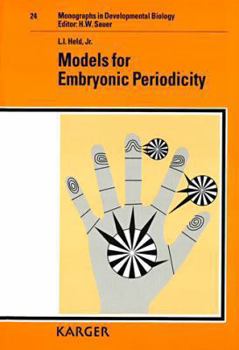Models for Embryonic Periodicity
Select Format
Select Condition 
Book Overview
Spatially periodic patterns like zebra stripes or insect segments are mysteriously precise. How do they form during development? The deeper question, which lies at the heart of developmental biology, is: How do cells in different places within an embryo acquire different states of gene expression? In principle, there are three possible answers: either a cell's position causes its state, or its state causes its position, or both are caused by some third agent. These alternatives provide a framework for classifying theoretical models. Positional information models, the most widely used today, belong to the first category. Dozens of rival schemes have been proposed, but until now many have been overlooked because they were obscured by confusing jargon, impenetrable mathematics, or tortuous logic. In order to facilitate comparisons, this book (1) strips away all ad hoc assumptions to expose the central tenets of each model, (2) traces the historical roots and familial relationships among different types of models, and (3) illustrates the rules of each model in terms of how it would solve the same basic problem. It also reexamines the computer metaphor in developmental biology: Are embryonic cells robots in disguise? The surprising answer, based upon their ability to perform Boolean logic, store and process information, execute iterative subroutines and malfunction in predictable ways is yes! This valuable text by the author of the acclaimed new book Imaginal Discs (Cambridge University Press) is required reading for biologists and zoologists interested in the pattern subfield of developmental biology.
Format:Paperback
Language:English
ISBN:3805560087
ISBN13:9783805560085
Release Date:January 1992
Publisher:S. Karger AG (Switzerland)
Length:119 Pages
Weight:1.45 lbs.
Dimensions:0.3" x 6.1" x 8.7"
Related Subjects
Medical Medical Books Science Science & Math Science & Scientists Science & TechnologyCustomer Reviews
0 rating





